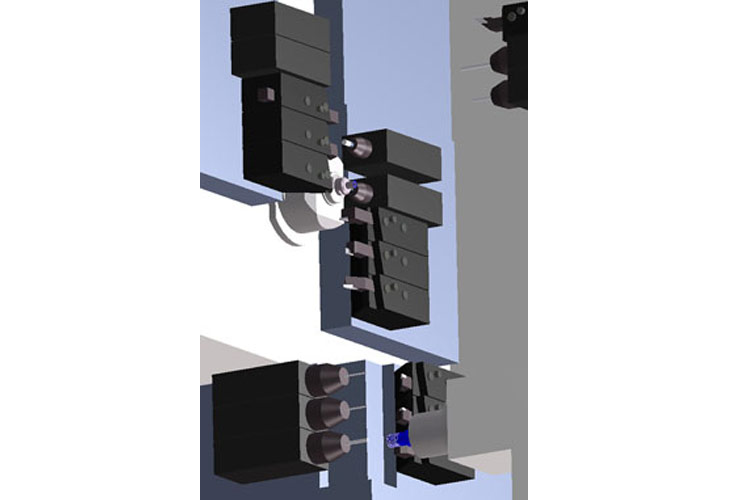Gibbs and Associates, developer of GibbsCAM® software for programming CNC machine tools and a Cimatron company, recently announced that they will introduce GibbsCAM UKM (Universal Kinematic Machine), the brand-new engine behind the upcoming release of GibbsCAM 2015, at IMTS 2014, September 8–13, 2014, at McCormick Place, Chicago, in Booth # E-3310. GibbsCAM UKM is a complete reengineering of the CAM engine and how it relates to machine definitions and machine tools, blurring the line between the definition of mills and lathes.
Bill Gibbs, CEO and President of Gibbs and Associates explains: “CAM systems were designed based on the way mills and lathes were originally created to move. Mill-turns and multi-task machines (MTM) started merging the two. GibbsCAM UKM was created from the ground up with no limitations. It can handle any number of axes in any direction, with multiple tools cutting simultaneously. With GibbsCAM UKM, users can program and accurately simulate virtually any machine today and even machines that haven’t been invented yet.”
A complete paradigm shift, the benefits of the GibbsCAM UKM engine extend throughout the entire product line, not just those areas relating to complex machines. Dramatic improvements to rendering and Machine Simulation provide the most accurate simulation available, giving customers the confidence that what they see on the computer screen is what will happen at the machine. Machine simulation and post processors are built on the same kinematic model, optimizing the programmer’s time and ensuring complete accuracy.
The new UKM architecture is backward compatible, so current post processors and machine simulation models for GibbsCAM will continue to provide a return on investment. In addition, customers will be able to program and simulate the most complex machines on the market, including machines from Bumotec, Citizen, DMG MORI, Doosan, Matsuura, Mazak, Nakamura-Tome, Okuma, Star, Tornos, Willemin-Macodel, and many others.
Significant changes have been made to the tooling functionality of GibbsCAM 2015. In addition to new tool types being added (Barrel, Dovetail, Convex Tip, E-style ISO insert, and tools defined by solids), GibbsCAM now has dynamic 3D viewing of tools and tool-holders in the tool dialog, allowing users to accurately visualize the tools they are selecting for the job.
An entire new category of tooling has been added called Intermediate Tooling. This allows for items that are neither tools nor fixed parts of the machine, such as fixtures (chucks, tailstocks, steadyrests) and toolblocks (adapter blocks, holders for toolholders, and the like). Programmers can create libraries of toolblocks to easily setup complex machines, and can share those libraries across different parts, saving time and reducing errors.
GibbsCAM 2015 has significant improvements throughout the product line, from geometry creation to toolpath strategies, including additional High Speed Machining (HSM) strategies. New functionality has been added to aid in the importing and machining of hole features. Holes are now treated as fully associative features of solid bodies, including those imported from SolidWorks, Solid Edge, Autodesk Inventor, or CATIA V5. Compound holes (holes with multiple segments that might each be tapered or threaded) are now supported as well. New Geometry tools include improved spline editing and contour tracing capabilities. Improvements to machining include new Adaptive Roughing capabilities, pre-drilling and background processing for VoluMill, and many new capabilities for the Tombstone Management System, which has long been recognized as the most comprehensive software for programming parts on a tombstone.


